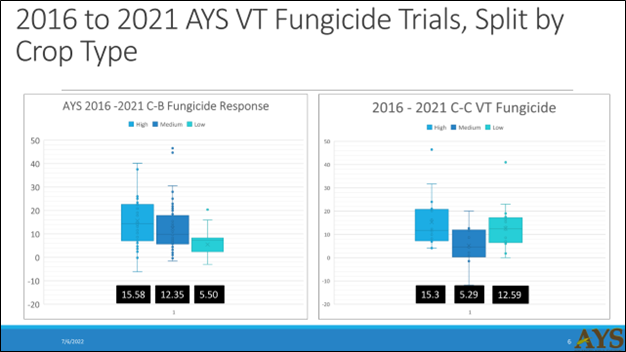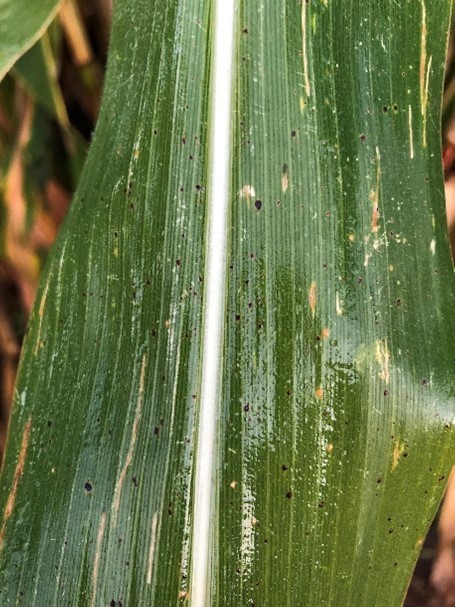
The one-stop-shop to hearing everything you need to know about what is happening in your fields this week.
This week’s featured agronomists are:
Austin Schultz – Le Center
Hannah Elias – Goodhue
Tanner Borgschatz – Kenyon
Brett Decker – Lewiston
Luke Daninger – Ellsworth
Scroll down to hear from your local agronomist.
WEST
Belle Plaine – Le Center – Le Sueur
 Austin Schultz
Austin Schultz
Let’s talk fungicide! This week, our western geography on the verge of tasseling, with many fields being 2-3 leaves away from tassel. This marks the ideal timing to begin fungicide applications on moderate to high responding hybrids. If you have any questions as to what your hybrids response to fungicide rating is, call your agronomist today! When planning to spray fungicide, we want to start slightly before tassel and continue application until the silks are black, which after that the return on investment begins to diminish. We are a little on the early side for soybeans yet, with many soybeans in the early R2 stage. Ideal timing for soybeans is around R2-R3, so holding out on your application for a little longer may be beneficial for adding any insecticide if aphids do begin to show up.
EAST
Pine Island – Cannon Falls – Goodhue – Lake City
 Hannah Elias
Hannah Elias
The hot topic this week is corn fungicide, but what about the soybeans? Miravis Neo is our go-to product to spray on corn and soybeans. Like the effect on corn, the benefits of spraying a fungicide on soybeans include the following:
- Increased plant health
- More efficient plant respiration
- Increase in pods
- Increase in pod weight
- Increase in disease suppression
When can I spray it?
Ideally, we would like to spray around the R3 (early pod) growth stage when the pods are 1/8 to ¼ of an inch long and is on one of the most upper nodes of the plant. In our area most soybeans are in the R1 phase but early planted, early maturity beans are moving into that R2 phase.

What can I spray with it?
Masterlock will come highly recommended for any fungicide application. The Interlock and Drop Tight technology increase coverage and droplet spread while decreasing drift and evaporation.
Insecticide can be thrown in with the fungicide IF the bugs are at an economic threshold level.
Herbicides can be thrown in the tank IF Miravis Neo is a labeled tank mix partner.
Year over year we continue the see benefits to spraying fungicides, always ask your agronomist if you have any questions about timing, tank mixes, or data.

CENTRAL
Morristown – Wanamingo – Kenyon
 Tanner Borgschatz
Tanner Borgschatz
The corn and soybeans are progressing quickly with this long stretch of heat and humidity. Along with the heat and humidity comes an increased potential for corn and soybean diseases. The ideal time to apply a fungicide is VT (tassel) stage in corn and R3 (beginning pod) stage in soybeans which will be here within the next couple of weeks. Your agronomist will have an AYS Fungicide Response Cheat Sheet with Brand, Answer Plot data, and our own AYS Response to Fungicide ratings for many of the commonly planted hybrids in our territory. Below are aggregated yield results of AYS fungicide trials for corn split out by RTF rating. If you have not already, contact your agronomist or AYS specialist to see which of your hybrids may benefit from a fungicide application.

SOUTH
Elgin – Lewiston – Stewartville
 Brett Decker
Brett Decker
As we approach the middle of July, we have wrapped up all the herbicide and corn side dress applications. Now our focus is shifting to fungicide applications on corn and soybeans. This time of year can be very busy scouting fields to see what worked, what didn’t, and taking notes for what needs to be improved for next year. Pictured in the small photo below: Late waterhemp emerging after application to take note of for next year.


As we focus on the fast-approaching fungicide season let’s keep an eye out for the newest disease, tar spot (photo left). This disease has been confirmed in northern Iowa along with Fillmore County that we service. Currently our best defense is a single application of a long-lasting residual fungicide. With the large amount of tar spot we had seen late last growing season, there is then a large amount of inoculum present. With the ideal weather we are experiencing we could easily see it flare up at any time. Some of favorable conditions include moderate temperatures, humidity greater than 85%, and leaf wetness greater than 7 hours per day. Let’s also not forget the other diseases like northern corn leaf blight and grey leaf spot that has shown to also rob yield. If you have any questions reach out to your local Ag Partners agronomist.
WWAS
Ellsworth
Join Luke Daninger for an update in the field:


